The more one approaches the entrance of Nakoda Jain Temples, the more one leaves behind the bustling activity around the parking area. After having passed the few, but obvious security officers, one actually enters a different world. It is quieter, and people are moving smoother. Here is no hectic pace, nobody aims at selling something, and people at the most are gifting smiles to each other. This small world of its own is generating the readiness to open inner spaces by its atmosphere alone.
Since quite some time, the Nakoda Jain Temples are a centre of attraction for Jain pilgrims from all over India and the world. The complete complex contains 3 Jain Temples, facilities for the accommodation of pilgrims, and a big dining hall. The construction work of the area had started in the 11th century CE approximately. The first buildings in the hills near the village of Mewanagar, former Virampur, originate from the 13th century CE. They came into being by the initiative of two brothers, two local rulers named Virsen and Nakorsen. They were the first at that time to order the construction of a Jain temple at the legendary location of a Jain Tirth. A Jain Tirth is a location, very often situated in the hills or mountains being a crossover between mundane and immaterial reality. These locations are supposed to be gates to higher reality, and are associated with elemental forces beyond sensual perception. The statues of the Tirthankaras in the 13th century temple were installed by Acharya Sthulibhadrasuri, but temporarily stored in Kalidrah to protect them against conquerors. Since the 15th century the temple complex was enlarged, respectively repaired. 3 Temples with over 200 statuettes and sculptures are forming at present the inner range of the Nakoda Jain Temple complex. They are dedicated to the Tirthankaras Rishabhanatha (1st) & Shantinatha (16th), as well as Parshvanatha (23rd).
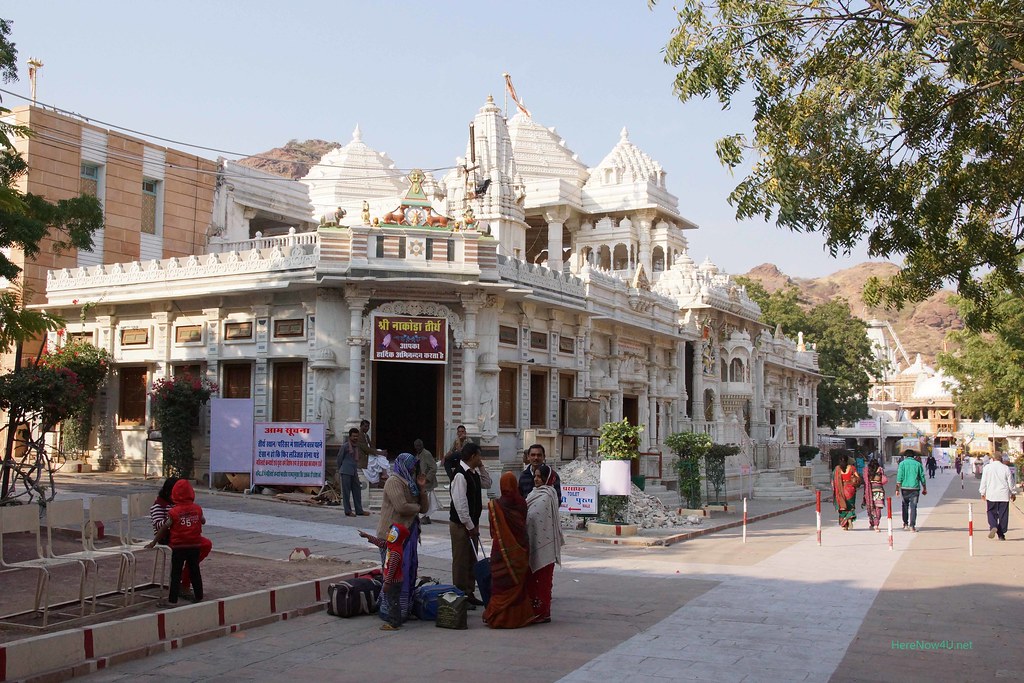
View from the entrance on Rishabhanatha & Shantinatha Temple

Entrance of Rishabhanatha & Shantinatha Temple
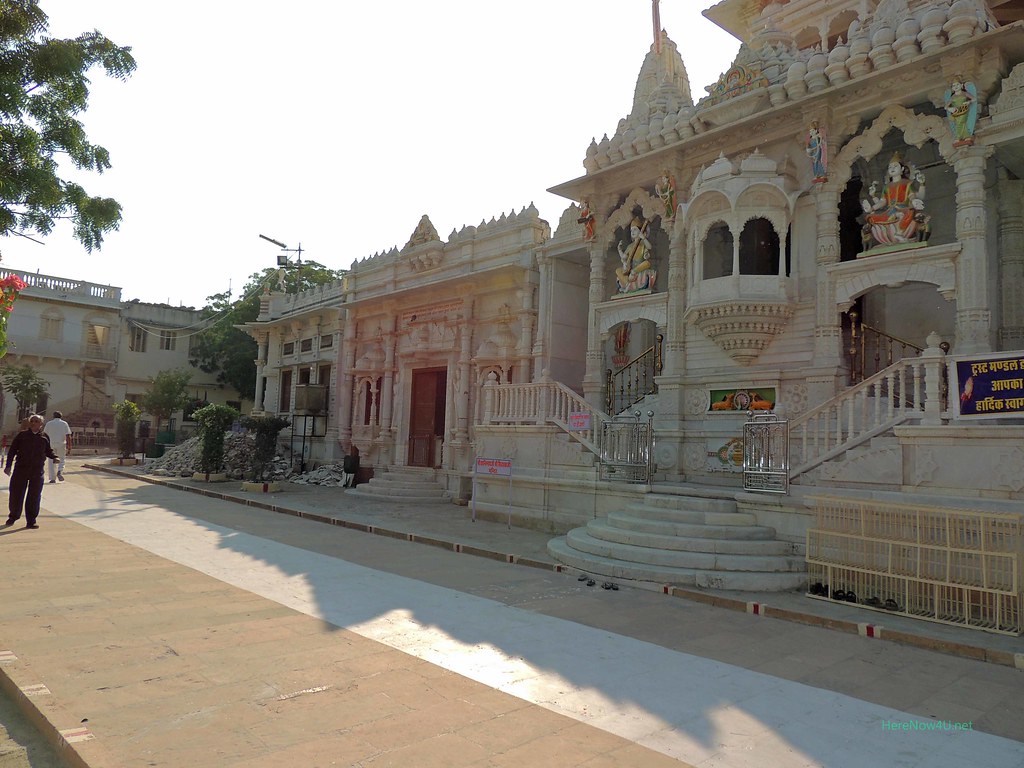
View from Rishabhanatha & Shantinatha Temple (r) to the entrance of the temple complex (l)


Front details of Rishabhanatha & Shantinatha Temple
Following the white colour marked main way one reaches the entrance of Rishabhanatha & Shantinatha Temple. Its marble façade gave the impression of recently having been polished anew. Even the coloured details of the depictions beamed in their original colours. Very often the outer impression of a temple or a temple complex gives an idea on the means expended by the concerned trust for its maintenance. Nakoda Ji (abbreviation of Jinalaya - location where the winners are residing) is a very well known pilgrim destination, because the natural forces here are said to be very strong. Besides it is no antique location where exhibits are presented, which means it is no museum, but a temple where religious dedication daily is celebrated as living expression of the Jain temple culture. This includes totally new clothing from head to toe after the ritual washing. This is an external signal showing the purification of the practitioner who now is cleansed from all worldly attachments and negative thoughts normally misting the purity of his soul. Now he is prepared for his encounter with higher reality in the temple.
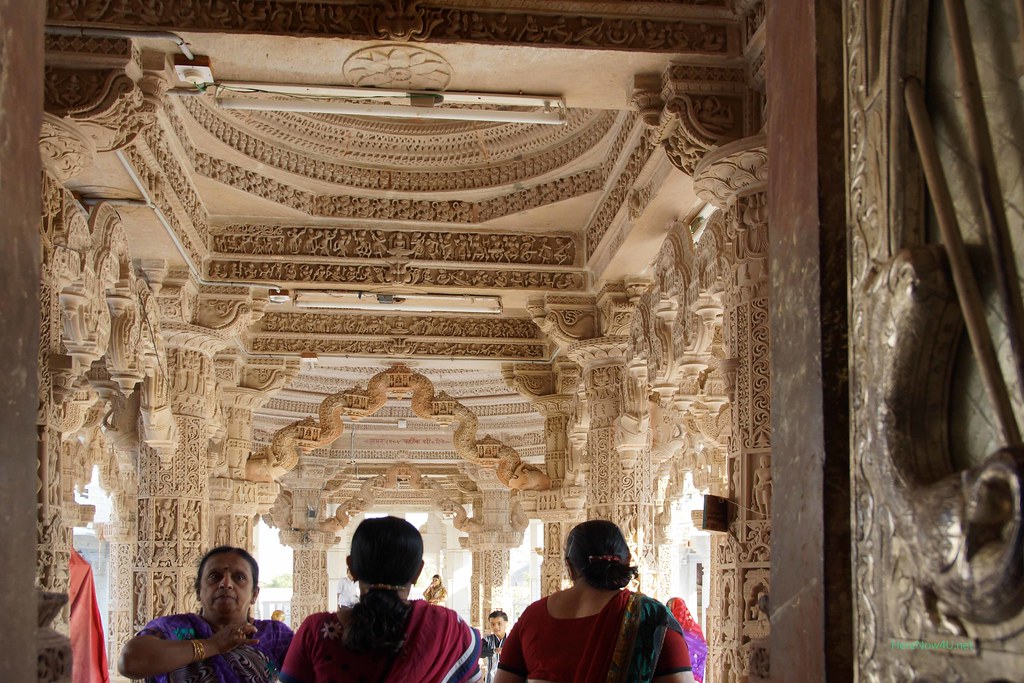
Ceiling decorated with a depiction of 02.Tirthankara Ajitanatha
After having entered the temple through one of the two broad set of steps leading inside, one comes to a small hall with a gazebo. Turning around, one sees a small stair leading upwards, behind a wide open door of pure silver. On top, the ornamental ceilings and walls are catching the attention. The stone braid under the semicircularly designed ceiling contains a depiction of 2nd Tirthankara Ajitanatha.
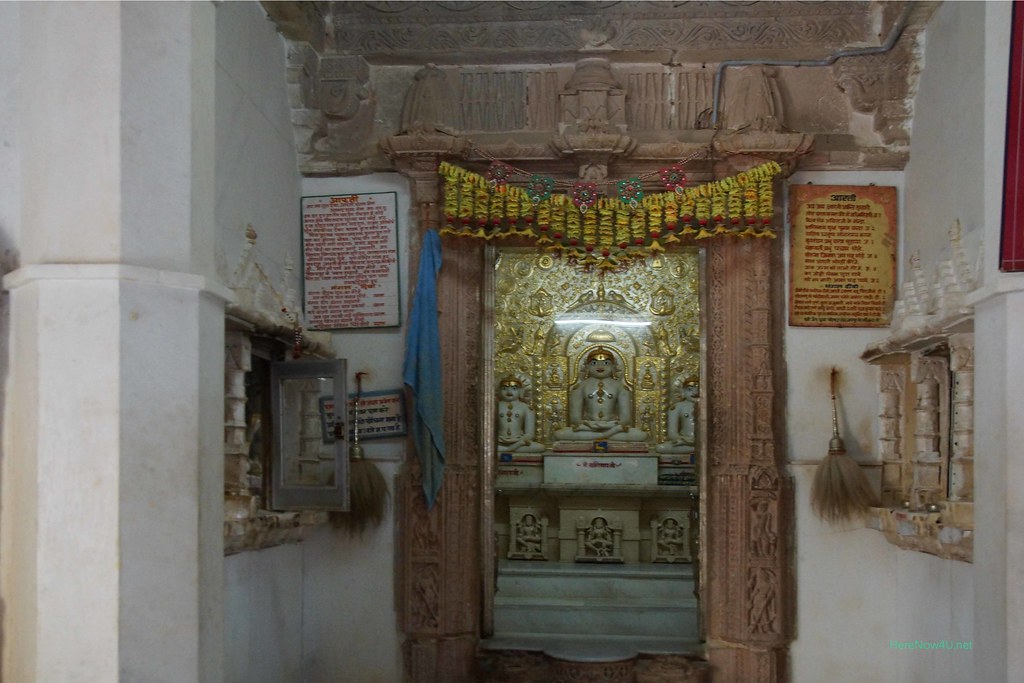
16th Tirthankara Shantinatha in lotus posture (m)
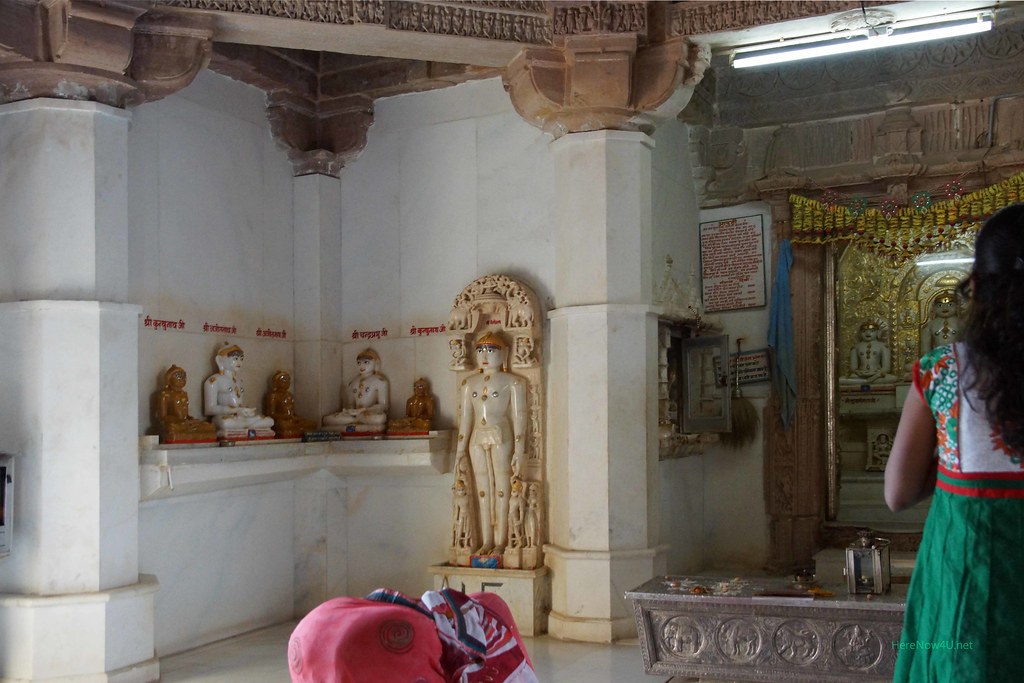
22nd Tirthankara Neminatha in a standing position
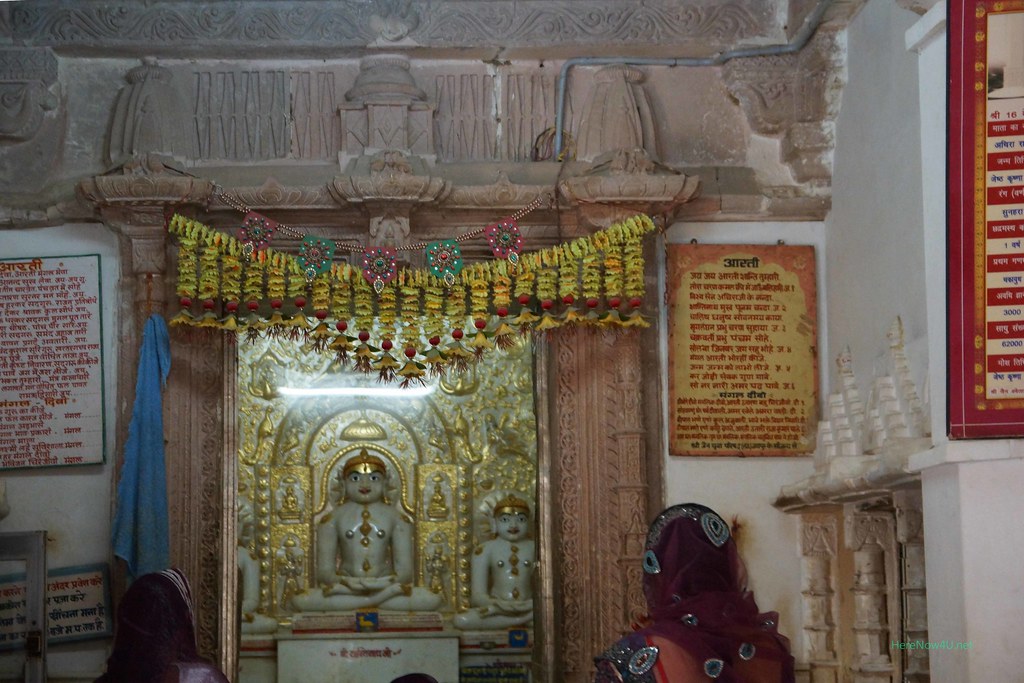
16th Tirthankara Shantinatha (m), 08th Tirthankara Chandraprabha (r)
In the Garbhagriha the depiction of the 16th Tirthankara Shantinatha is flanked by smaller sculptures of two Tirthankaras. They all are sitting in front of a wall made of pure silver, decorated with floral and ritual motives made of pure gold. The different camera angles are showing the Tirthankaras on the left and on the right of the bigger sculpture in the middle. On the left hand of the Garbhagriha a marble sculpture in a standing position as well as two smaller sitting idols and three even smaller than the two can be seen. In the following a small selection of further details can be found.

View from Garbhagriha back to the columns carved out of stone.
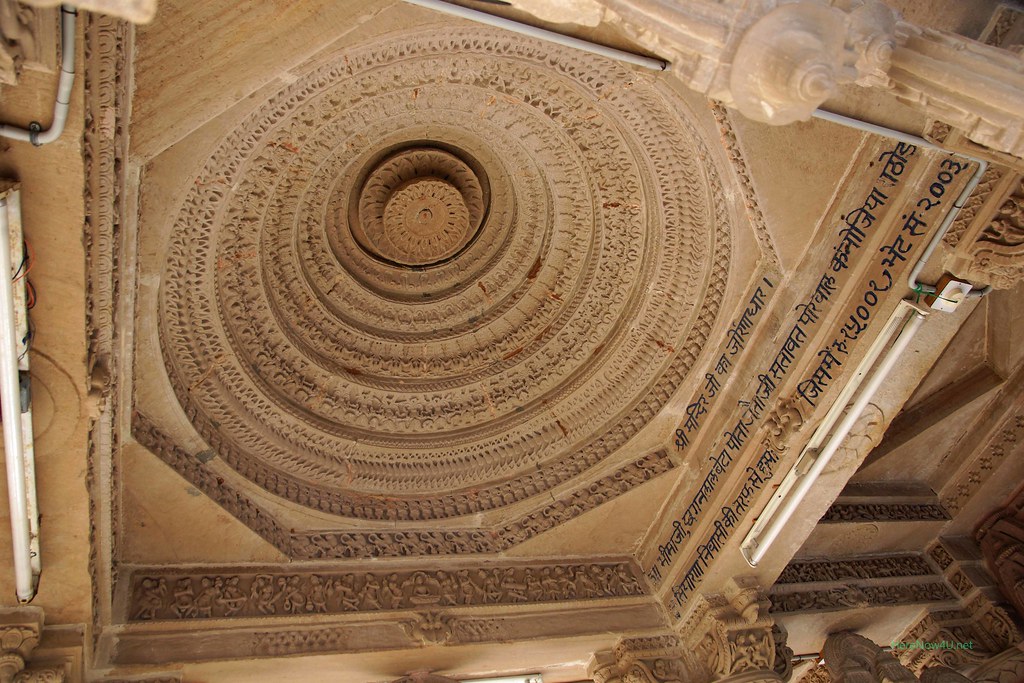
Details of the ceiling carved out of stone
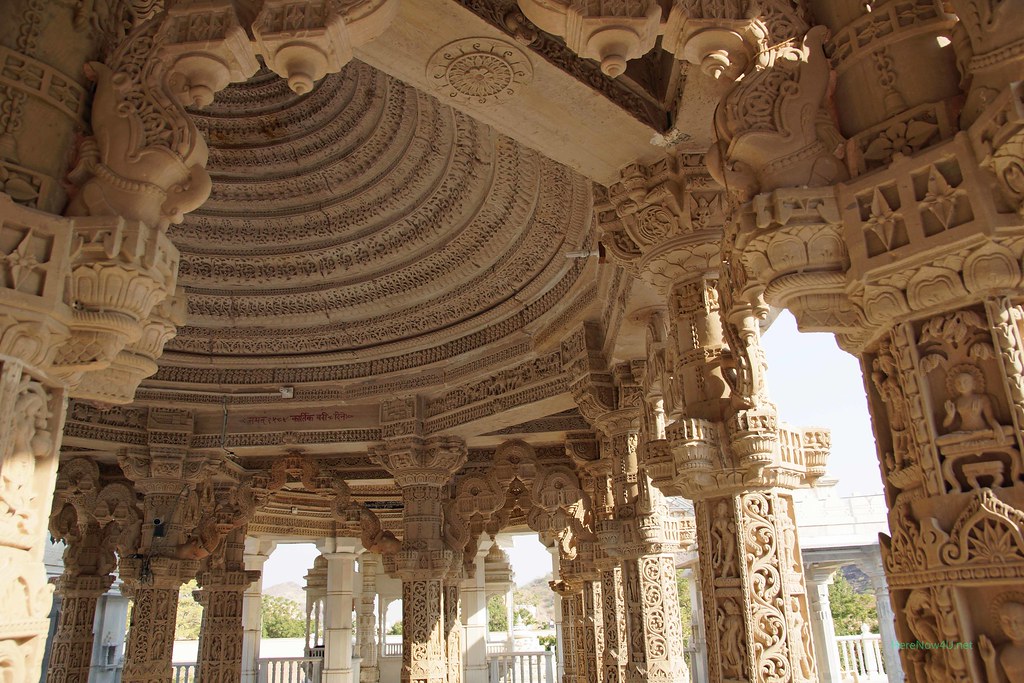
Ceiling and columns with garlands (Toranas)
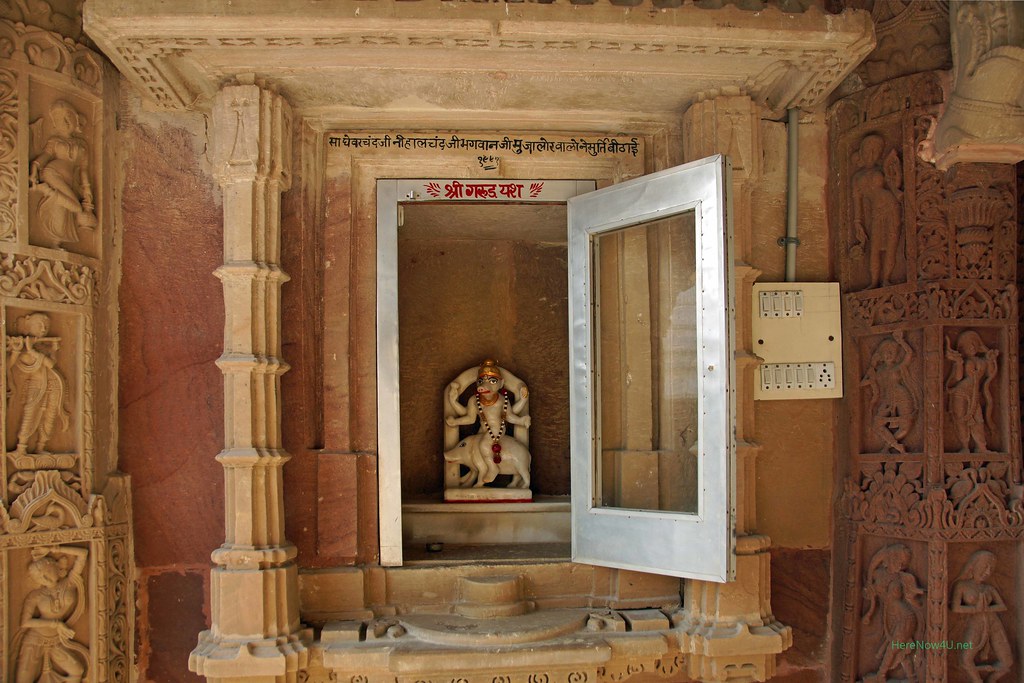
A four-armed human with a golden cap on his pig head riding on a savage boar

Hills behind the upper temple
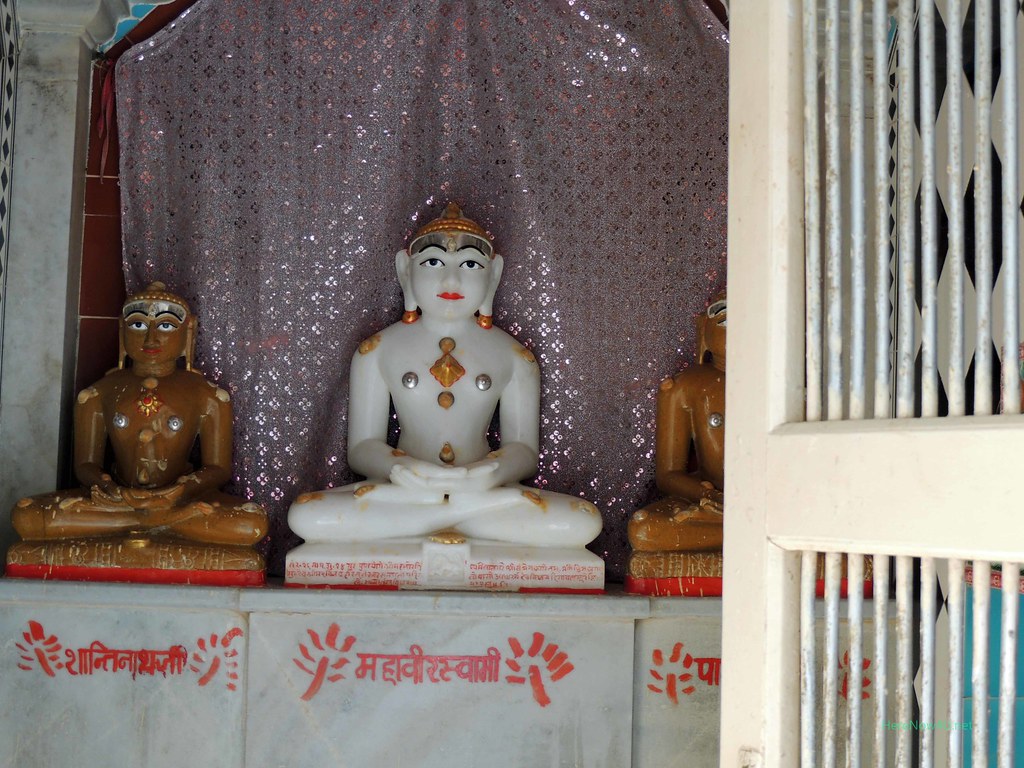
24th Tirthankara Mahavira (m) in marble, on the left a smaller sandstone sculpture of 2nd Tirthankara Ajitanatha
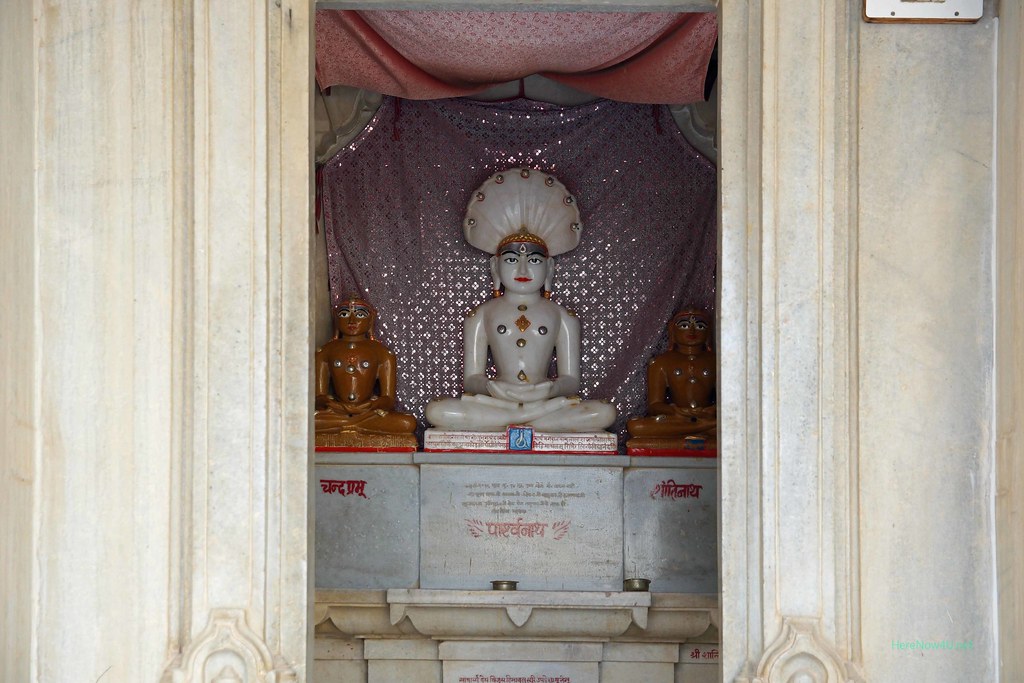
23rd Tirthankara Parshvanatha in marble (m) and 21st Tirthankara Naminatha (l) smaller in sandstone

21st Tirthankara Naminatha (above) and a Jain teacher (below)
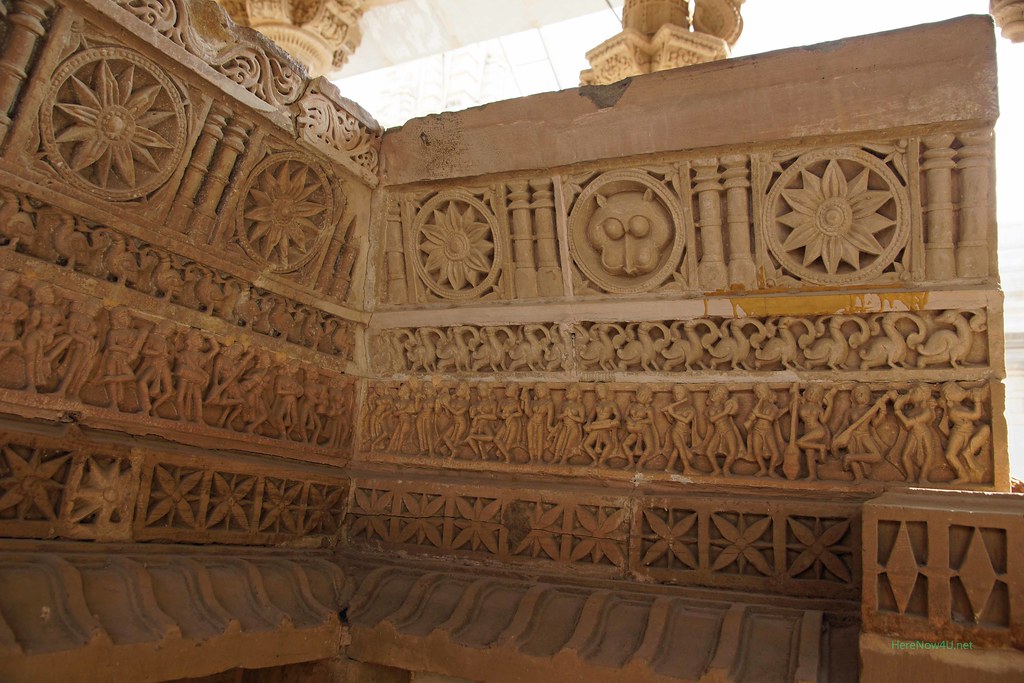
Details of a staircase carved out of stone
When we left the temple, the impression outside was different. Many people in feastful garments were on their way. We admired them, and they voluntarily stopped for a photo.

This young girl was on the way to Puja with her family.
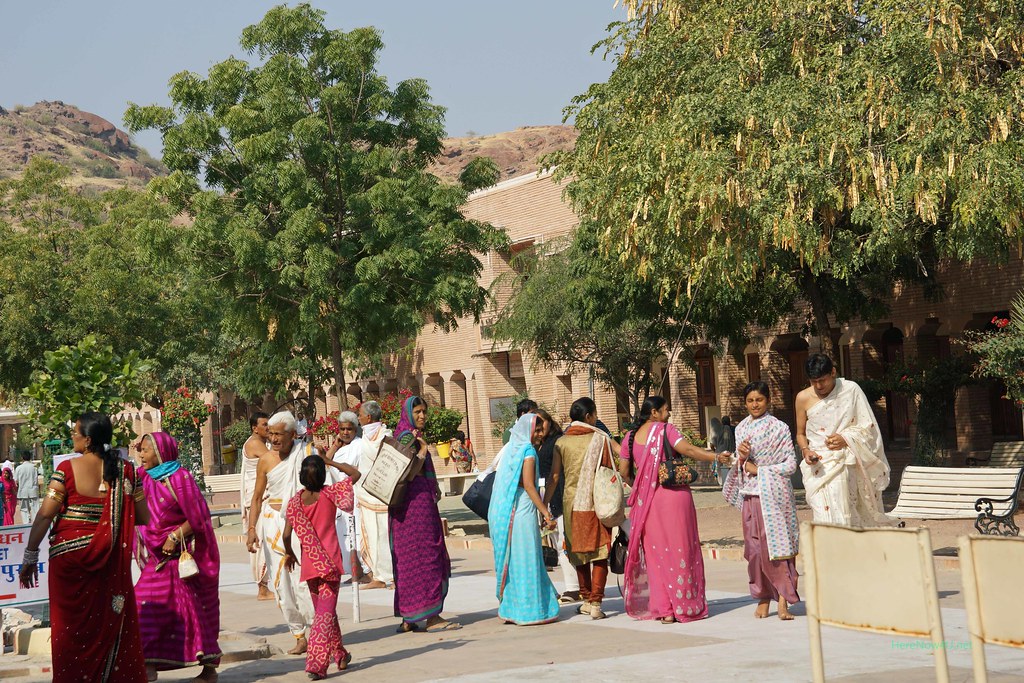
More and more people were on their way.
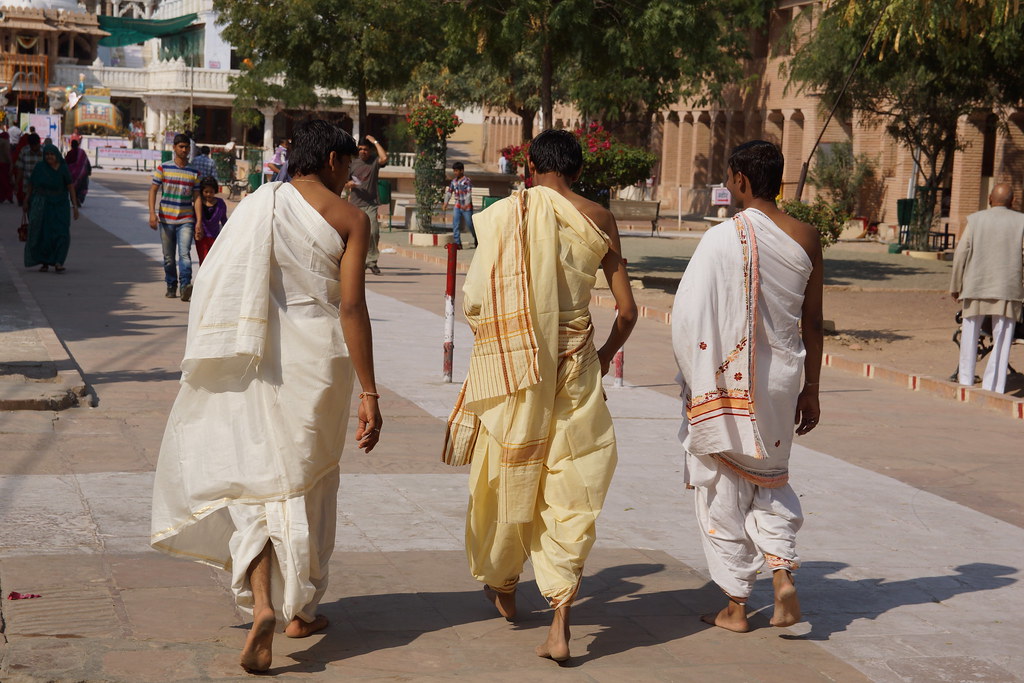
3 friends
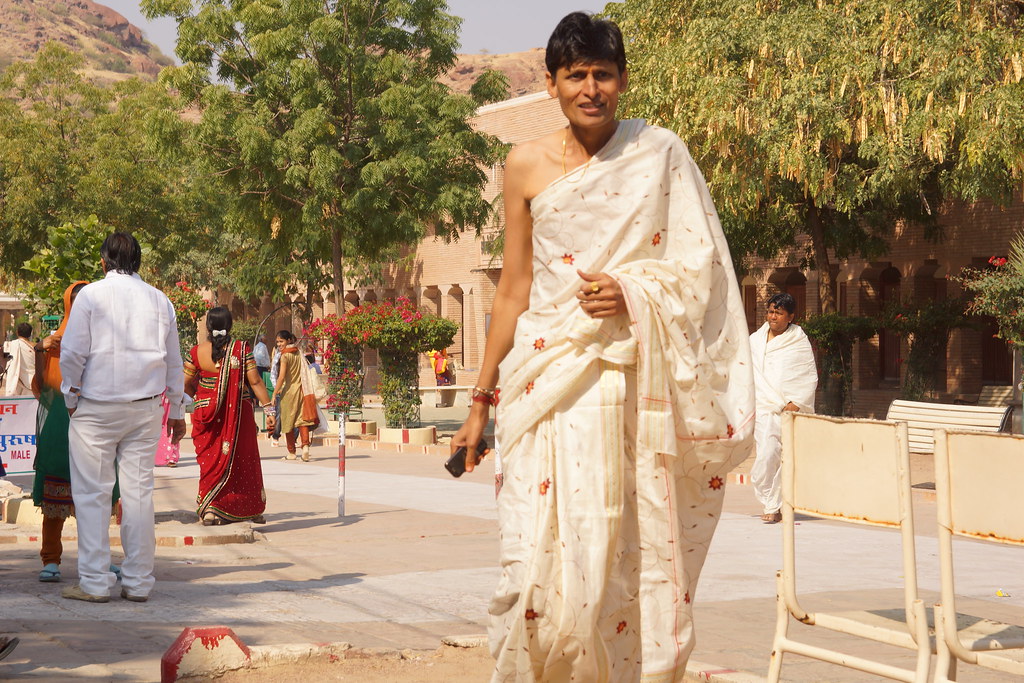
Tall and in a fine garment...
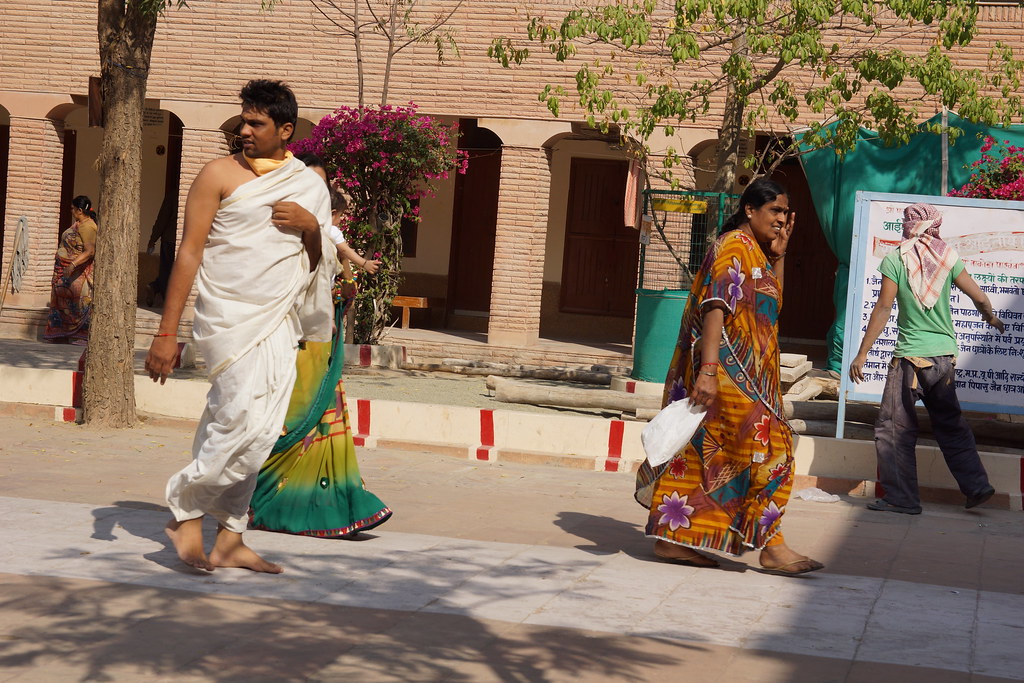
and hurrying...
Now all people were pouring in the same direction. It was a beautiful surging of men and women in traditional Indian clothes for celebration. Just a broad assortment of the completely new dresses required to participate in a puja. We decided to follow them, and this was the right decision.
 Editor Carla Geerdes
Editor Carla Geerdes